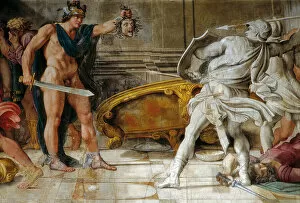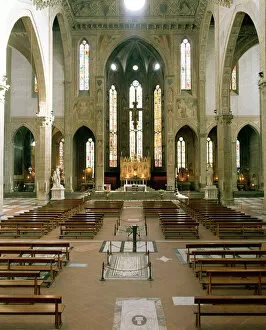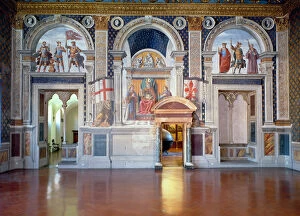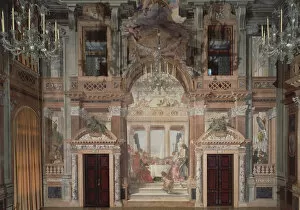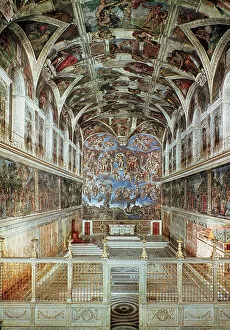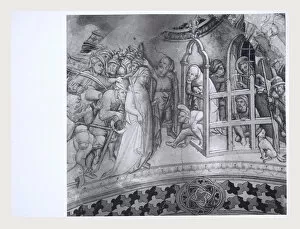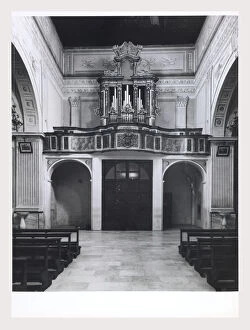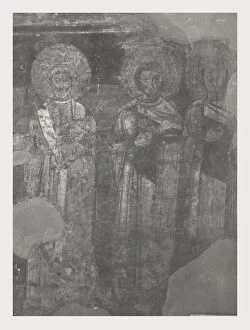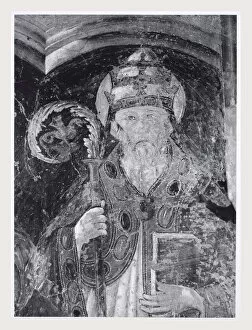Fresco Cycle Collection
The captivating world of fresco cycles takes us on a journey through time and artistry
For sale as Licensed Images
Choose your image, Select your licence and Download the media
The captivating world of fresco cycles takes us on a journey through time and artistry. Step into the interior view of the Sistine Chapel, before its restoration, where every inch is adorned with breathtaking masterpieces. Marvel at Perseus with the head of Medusa turning his enemies into stone, as depicted in Loves of the Gods from 1597. Venturing further, we find ourselves immersed in the life of St. Benedict, intricately portrayed in a detailed fresco within a church's walls. The beauty continues to unfold as we gaze upon the restored frescoes in Sala dei Gigli from around 1470; their vibrant colors and intricate details transport us to another era. In Cleopatra's Banquet, an enchanting scene unfolds before our eyes as this 18th-century fresco captures moments frozen in time. Returning once again to the Sistine Chapel's pre-restoration interior view, we are reminded of its timeless allure and artistic grandeur. From Tuscany's serene landscapes to Marches' historic San Severino Marche and Abruzzo's Campli S. Maria Platea, Italy serves as a backdrop for these magnificent works that have stood the test of time. As we venture into Lazio Roma Rome's S. Maria Antiqua and Anguillara Sabazia S. Francesco, it becomes evident that these frescoes not only depict stories but also serve as windows into Italian history and culture. Fresco cycles offer us glimpses into worlds long gone while reminding us that art has always been an integral part of human expression across different periods and regions.

